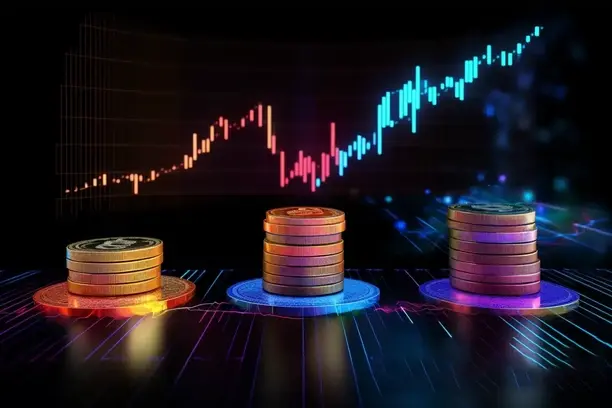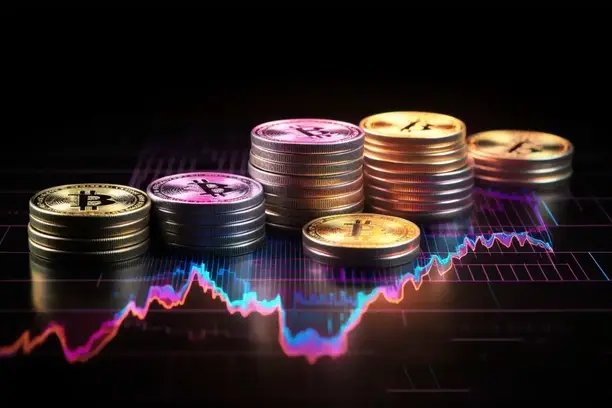In the cryptocurrency market, such as Bitcoin, buying and selling orders are two of the most critical market signals, which not only reflect the demand and sentiment of market participants, but also help us to determine the short-term trend of the market. By analyzing the changes in buying and selling orders, investors can make better decisions to buy or sell and avoid blindly following the trend. In this article, we will provide an in-depth analysis of what Bitcoin's buy and sell orders represent, and help readers understand how to get valuable market information from these signals to optimize their investment strategies.

Buying and Selling: The Market's Sentiment Barometer
The buying and selling orders in the bitcoin market are actually a direct reflection of supply and demand in the market. Simply put, buying orders represent how many investors in the market are willing to buy bitcoins, while selling orders are how many people are looking to sell bitcoins. They reflect market sentiment and trends, and are often seen as important indicators of where prices are headed.
The size of the buying and selling orders usually reveals the buying and selling pressure in the market. If the buying order is larger than the selling order, it indicates that the market demand is strong, which may drive the price up; on the contrary, the selling order is larger than the buying order, which may imply that the market sentiment tends to be pessimistic and the price is under downward pressure. Therefore, investors can observe these market signals to determine the current trend of the market and make trading decisions accordingly.
How to determine market trends by buying and selling?
1. Strong buying and bullish market
When buying is large in the bitcoin market, it indicates that there are a large number of buyers in the market looking to purchase bitcoin at a high price. This usually means that the market is optimistic about the future trend of bitcoin and that there is more momentum for the price to rise. At this point, if selling does not increase quickly, the price may continue to rise. Especially if the volume of buying continues to increase, market sentiment will strengthen further, which is a positive sign for long investors.
2. Selling pressure and a bearish market
Contrary to buying, when selling dominates the market, it indicates a high level of selling pressure. At this point, investors lack confidence in bitcoin's future market and choose to sell their bitcoin holdings to avoid risk. In this case, the price of bitcoin usually faces downward pressure. Excessive selling and fewer buyers can lead to a market crash, especially when selling sentiment is concentrated, with a higher likelihood of a rapid price decline.
3. Buyers and sellers in balance, market oscillations
Sometimes, the market is largely balanced between buyers and sellers, resulting in the price remaining within a narrow range and the market showing an oscillating consolidation. This usually occurs when there is a high level of uncertainty in the market, for example, when investors do not have a clear view of Bitcoin's future movements. At this point, market participants may be waiting for some major news or event to drive the price, and in the event of a breakout, the price may move more in one direction or another.

How to make trading decisions based on buy and sell orders?
1. Observing the ratio of buying to selling orders
Investors can determine whether the market is in an overbought or oversold state by looking at the ratio of buy orders to sell orders. If the buy orders are significantly larger than the sell orders, prices are likely to rise in the short term; conversely, if the sell orders are larger than the buy orders, the market may be at risk of falling. By tracking changes in these ratios, investors can make more timely buying or selling decisions.
2. Tracking order depth chart
On cryptocurrency exchanges, order depth charts are an important tool for investors to determine market trends. By looking at the depth chart, you can see the number and price of buy and sell orders that are currently pending. When buy orders are in front of sell orders, it indicates that the market is favoring an upward trend, while sell orders are in front of buy orders, which can mean a downward risk.
3. Combined volume analysis
In addition to the number of buy orders and sell orders, volume is also an important reference factor in determining market sentiment. If the buy orders increase and the volume rapidly enlarges, it means that the market is likely to enter an upward phase; while if the sell orders increase and the volume enlarges, the market is likely to enter a downward channel. Therefore, investors can combine buying, selling and volume changes to form a more comprehensive market judgment.
Real-life example: How the market reflects market sentiment through buy and sell orders
As an example, a well-known cryptocurrency exchange, Euronext, has demonstrated a significant change in buying and selling at the time of a major event. For example, in November 2023, the price of Bitcoin suffered a sharp pullback, the number of sell orders in the market increased significantly, and the price fell sharply. By observing these signals of buying and selling, early investors were able to anticipate the market's movement and thus choose the right time to sell their bitcoins, avoiding even greater losses.
In this case, real-time data from exchanges becomes crucial to help investors keep abreast of market developments and make decisions accordingly.
Summary: Grasping market signals of buying and selling
Buy and sell orders in the Bitcoin market are more than just traders' intentions to buy and sell; they are a reflection of market sentiment. By accurately interpreting these market signals, investors can better understand the market trend and optimize their trading strategies. Of course, a single buy and sell signal is not enough to fully predict the direction of the market, and investors need to analyze it in combination with other technical indicators, news events and other factors to improve the accuracy of their decisions.
By constantly keeping an eye on buying and selling orders and understanding the mood swings behind the market, investors are able to position themselves in the cryptocurrency market and better cope with the ups and downs of the market.







